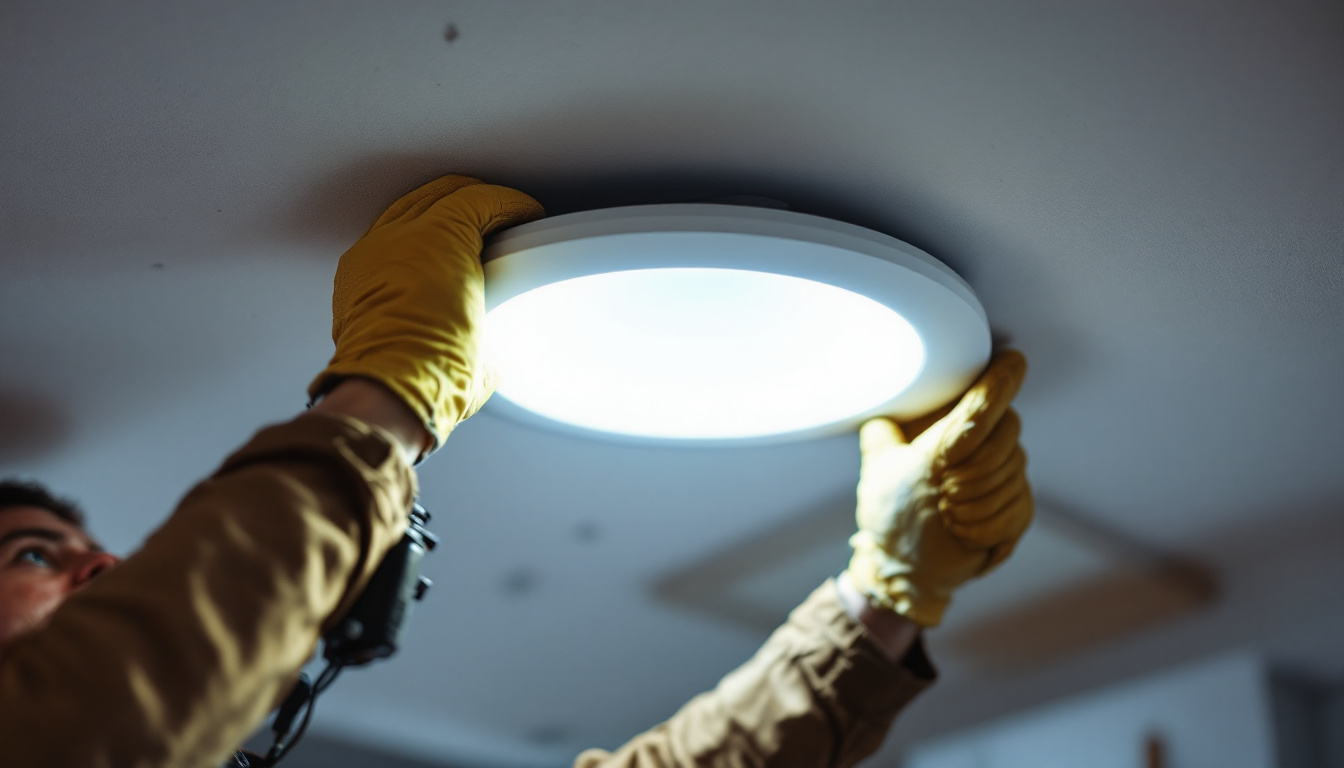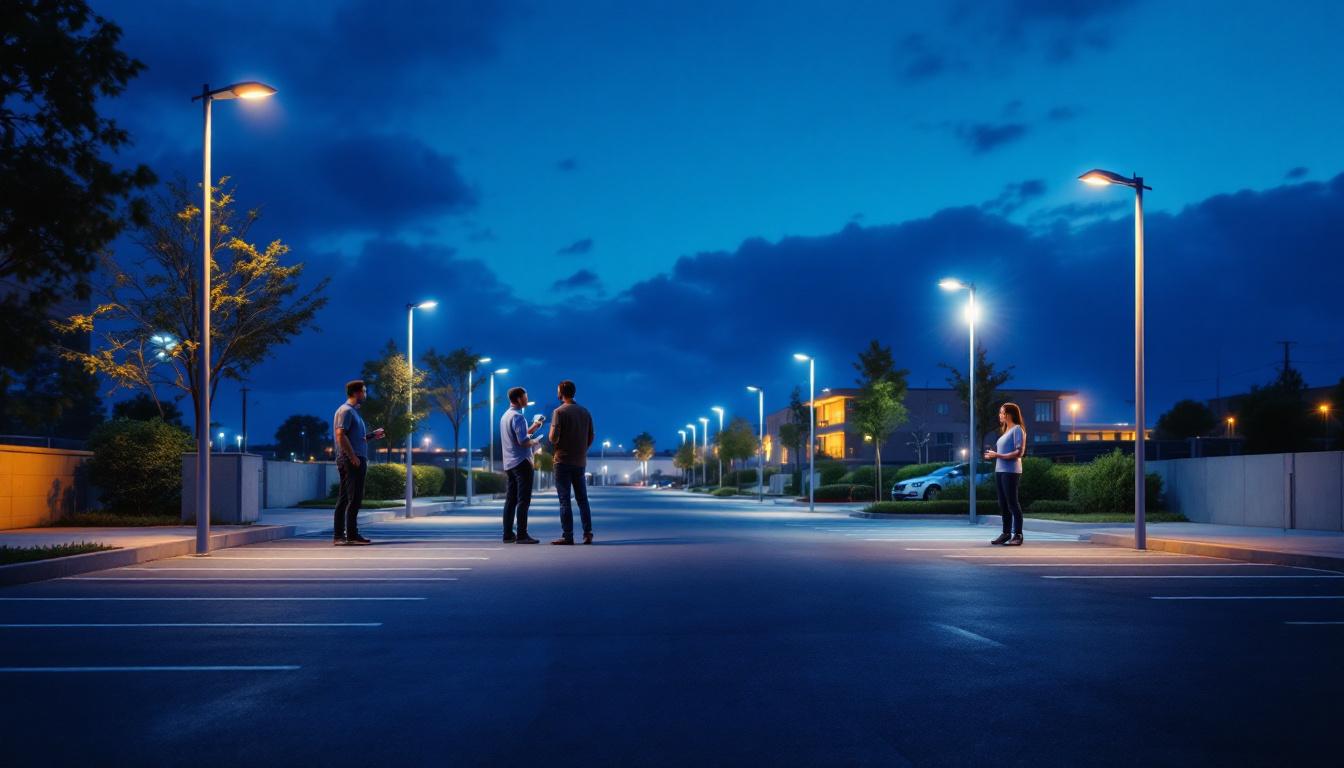
Fluorescent Tube Lighting: A Guide for Lighting Contractors
Fluorescent tube lighting has long been a staple in both commercial and residential settings, offering an energy-efficient alternative to traditional incandescent lighting. For lighting contractors, understanding the intricacies of fluorescent tube lighting is essential for providing clients with optimal solutions. This guide delves into the various aspects of fluorescent tube lighting, including types, installation, maintenance, and troubleshooting.
Fluorescent lighting operates through a process that involves exciting mercury vapor within a glass tube, producing ultraviolet light that then excites a phosphor coating inside the tube, resulting in visible light. This technology is not only energy-efficient but also offers a longer lifespan compared to incandescent bulbs. In fact, fluorescent tubes can last up to 20,000 hours, significantly reducing the frequency of replacements and maintenance costs for both residential and commercial settings.
There are several types of fluorescent tubes available, each designed for specific applications and environments. The most common types include T5, T8, and T12 tubes, which differ in diameter and efficiency. The choice of tube can greatly influence the overall lighting quality and energy consumption in a space.
T5 tubes are the smallest, measuring 5/8 inch in diameter, and are often used in applications requiring compact lighting solutions. Their slim profile makes them ideal for under-cabinet lighting, display cases, and other areas where space is limited. T8 tubes, which measure 1 inch in diameter, are the most widely used fluorescent tubes, favored for their balance of efficiency and brightness. They are commonly found in offices, schools, and retail environments, providing ample illumination for work and display areas. T12 tubes, the largest at 1.5 inches in diameter, are being phased out due to their lower energy efficiency, but they can still be found in older installations, often requiring retrofitting to accommodate more efficient lighting options.
When selecting fluorescent tubes, several features should be considered. Color temperature, measured in Kelvin, affects the ambiance of a space. Common options range from warm white (around 3000K) to cool white (around 4000K) and daylight (around 5000K). Warm white is often preferred in residential settings for its cozy feel, while cool white and daylight options are favored in workspaces for their ability to enhance alertness and productivity. Additionally, the Color Rendering Index (CRI) is crucial as it indicates how accurately colors are represented under the light, with higher CRI values (above 80) being ideal for environments where color accuracy is essential, such as art studios and retail stores.
Another important feature is the ballast type, which regulates the current to the fluorescent tube. Magnetic ballasts are traditional but less efficient, often leading to flickering and humming noises that can be distracting. In contrast, electronic ballasts offer better performance, energy savings, and a quieter operation, making them the preferred choice for modern installations. Furthermore, some electronic ballasts are designed to be compatible with dimming systems, allowing for customizable lighting levels that can enhance the functionality and aesthetics of a space. As the technology continues to evolve, newer options like LED tubes are also emerging, providing even greater energy efficiency and longer lifespans, further revolutionizing the lighting industry.
Proper installation of fluorescent tube lighting is critical for ensuring optimal performance and longevity. Lighting contractors should follow best practices to avoid common pitfalls.
Before installation, it is essential to assess the space where the fluorescent tubes will be installed. Factors such as ceiling height, room size, and intended use should influence the choice of fixtures and tube types. Additionally, ensuring that the electrical system is compatible with the selected ballasts is crucial for a successful installation.
Contractors should also gather the necessary tools and safety equipment, including wire strippers, screwdrivers, and safety goggles. Proper planning can streamline the installation process and minimize disruptions.
The installation process begins with turning off the power to the circuit where the tubes will be installed. Next, the contractor should remove any existing fixtures and prepare the mounting surface. Depending on the fixture type, it may be necessary to install mounting brackets or hangers.
Once the fixture is secured, the next step is to connect the wiring. This involves connecting the ballast to the power supply and ensuring that the wiring is correctly configured according to the manufacturer’s instructions. After the wiring is complete, the fluorescent tubes can be inserted into the fixture, ensuring they are securely locked in place.
Finally, the power can be restored, and the system tested to ensure proper operation. It is advisable to check for flickering or dimming, which may indicate issues with the ballast or wiring.
Regular maintenance is essential for maximizing the lifespan and efficiency of fluorescent tube lighting. Contractors should educate clients about the importance of upkeep to prevent premature failures and ensure optimal performance.
Fluorescent tubes can accumulate dust and grime over time, which can significantly reduce their brightness and efficiency. Regular cleaning of the tubes and fixtures is recommended. Using a soft cloth or a non-abrasive cleaner can help maintain their clarity without damaging the surface.
Additionally, the fixtures themselves should be inspected periodically for any signs of wear or damage. Ensuring that the fixtures are free from obstructions will also help maintain optimal light output.
Despite their longevity, fluorescent tubes can fail over time. Signs of a failing tube include flickering, dimming, or complete failure to illuminate. Contractors should be prepared to troubleshoot these issues, starting with checking the ballast and wiring connections.
If a tube is determined to be faulty, replacing it is a straightforward process. However, it is essential to ensure that the replacement tube matches the specifications of the original to maintain compatibility and performance.
Even with proper installation and maintenance, issues can arise with fluorescent tube lighting. Being able to troubleshoot these problems is a valuable skill for lighting contractors.
Flickering or dimming lights can be caused by several factors, including a failing ballast, poor connections, or incompatible tubes. The first step in troubleshooting is to check the ballast, as this component regulates the electrical current to the tubes. If the ballast is malfunctioning, it may need to be replaced.
Additionally, checking the wiring connections for any loose or damaged wires can help identify the source of the problem. Ensuring that the correct wattage and type of tubes are being used is also critical for preventing flickering and dimming.
Over time, fluorescent tubes may exhibit a color shift, where the light output changes from the original color temperature. This can be caused by aging tubes or a failing ballast. If color shift is noticed, replacing the tubes with new ones of the same specifications is the best course of action.
Contractors should also educate clients about the importance of using high-quality tubes, as cheaper alternatives may not maintain consistent color output over time.
Fluorescent tube lighting is known for its energy efficiency, which is a significant selling point for contractors. Understanding the environmental impact and energy savings associated with fluorescent lighting can help contractors make informed recommendations to clients.
Compared to incandescent bulbs, fluorescent tubes use significantly less energy to produce the same amount of light. This reduction in energy consumption translates to lower utility bills for clients, making fluorescent lighting an attractive option for both residential and commercial applications.
Furthermore, the longer lifespan of fluorescent tubes means less frequent replacements, which can reduce waste and contribute to sustainability efforts. Educating clients about these benefits can enhance the value of the contractor’s services.
While fluorescent lighting is more energy-efficient than traditional options, it is essential to consider the environmental impact of disposal. Fluorescent tubes contain small amounts of mercury, which can be harmful if not disposed of properly. Contractors should inform clients about local regulations regarding the disposal of fluorescent tubes and encourage them to recycle whenever possible.
Promoting environmentally friendly practices not only benefits the planet but also enhances the contractor’s reputation as a responsible and knowledgeable professional.
The lighting industry is continually evolving, and staying informed about future trends is crucial for contractors. While LED technology is rapidly gaining popularity, fluorescent lighting still has a place in many applications.
One of the emerging trends in lighting is the integration of smart technology. Fluorescent lighting systems can be adapted to work with smart controls, allowing for features such as dimming, scheduling, and remote operation. This integration enhances energy efficiency and provides users with greater control over their lighting environments.
Contractors should familiarize themselves with smart lighting solutions and consider offering these options to clients looking for modern, flexible lighting systems.
Despite the rise of LED technology, fluorescent lighting remains a viable option for specific applications, particularly in commercial settings where high-intensity lighting is required. Understanding the unique advantages of fluorescent tubes can help contractors recommend the best solutions for their clients.
For instance, in environments such as warehouses or manufacturing facilities, fluorescent tubes may provide the necessary brightness and coverage at a lower initial cost compared to LED alternatives.
Fluorescent tube lighting continues to be an essential component of the lighting industry, offering energy-efficient solutions for various applications. For lighting contractors, mastering the intricacies of fluorescent lighting—from installation and maintenance to troubleshooting and understanding future trends—is vital for providing exceptional service to clients.
By staying informed about the latest developments and best practices, contractors can ensure that they remain competitive in a rapidly changing market. Embracing the benefits of fluorescent tube lighting while also considering the shift towards more advanced technologies will position contractors for success in the years to come.
Ready to elevate your lighting projects with the best in fluorescent tube lighting? Look no further than LumenWholesale, where we provide lighting contractors with the highest quality, spec-grade lighting products at unbeatable wholesale prices. Say goodbye to local distributor markups and hello to superior lighting solutions that meet the highest industry standards. With LumenWholesale, bulk buying is a breeze, and with free shipping, you’re guaranteed premium lighting at the best value — no hidden fees, no compromises. Don’t miss out on the perfect blend of quality, affordability, and convenience. Wholesale Lighting at the Best Value is just a click away!

Discover expert insights and quick tips from lighting contractors on replacing recessed LED lights.

Discover effective strategies to train your team in installing and maintaining solar lights for parking lots.

Discover the ultimate guide for lighting professionals with our essential checklist for choosing the perfect light pendant.

Discover the importance of replacing fluorescent light bulbs in your lighting installations.